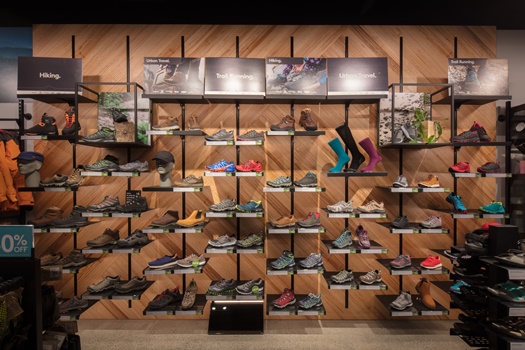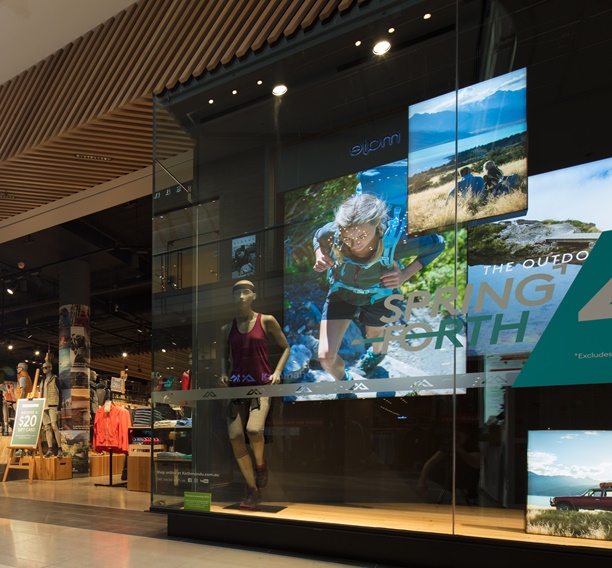Lighting plays a major role in creating the right atmosphere for any environment, but it is crucial in a retail space as it can influence how your customers shop.
According to Retailite senior lighting design specialist Patty Tartaglia, some retailers have reported a 10 per cent increase in sales following a lighting redesign, which makes sense given around 80 per cent of the sensory information the brain receives comes from the eyes.
“Great lighting is not just about how the customer sees a retail display or the retail space, but how it makes them feel—with the effects being on a subconscious level,” she said.
This means retailers need to consciously consider the use of light in-store, and at each stage of a customer’s journey. For example, there will be great differences in the mood/reaction you want to create (and therefore the lighting you would use) in different areas of your store, from the storefront to store displays and the payment area.
“From brand perceptions to consumer engagement, lighting creates an emotional connection between your consumer and your business,” said Tartaglia. “Once it is clear lighting isn’t simply about illumination, a consumer’s in-store experience and engagement will thrive.”

Kathmandu store lighting by Retailite.
Here are four ways your store lighting can influence your customers.
Altered emotional states
It’s vital to consider your target market when choosing lighting for your store, as it can increase dwell time depending on the emotions the space evokes.
“The intensity, direction and distribution of light on the walls, featured areas and the general space has been proven to alter the emotional state of customers to be more relaxed, tense, and/or to create feelings of intimacy,” said Tartaglia.
“For example, Kathmandu (seen above) is synonymous with the outdoors, adventure and experience. The store lighting uses the theatre of lighting design concept to elicit emotion in the customer, create contrast through the store and highlight the active lifestyle and nature of the brand.”
Direction to products
In studying how people react to different retail lighting set ups, the Hamburg University of Applied Sciences found people’s eyes were naturally drawn to areas of contrast, rather than the most brightly lit areas, and were attracted to blue light more than any other colour.
Retailers can use this information to direct customers around the store, said Tartaglia. “The use of directional lighting, and the careful design of lighter and darker areas of the store, will influence in-store movement… Shoppers will tend to linger longer in areas that have ‘warm’ lighting, and so this can be utilised to lead customers to desired areas.”
A different study, from the Royal Institute of Technology in Sweden, found store windows were most effective when the lights were shining from the ceiling, rather than the sides.
“From this they also concluded that a light’s colour temperature could be used to lead customers to certain parts of the store or even products,” said Tartaglia. “It’s all about the theatre of lighting—you can control the user’s vision and demand attention, and navigate the attention around the space through the use of lighting.”

Store windows are most effective when the lights shine from the ceiling.
Effects on the brain
In-store lighting can also have an effect on the rhythm of brain activity, which influences how a customer will engage with your store.
“Different frequency and intensity combinations of lighting can influence a customer’s perception of a brand—its level of luxury, its competence, and whether the brand’s image is aggressive or placid. Lighting needs to feel part of the creation of the store and reflect the right mood and ambience.”
Because of this, many brands are very specific about the colour temperature they use, and will often choose one to be a signature of their brand.
Improving sales
Studies have shown that the right retail lighting has the potential to change your customer’s purchase size and composition, as well as total spend. A case study involving UK fashion and lifestyle store, Gerry Weber, found a 10 per cent increase in sales after the store lighting was tailored to create a brighter and friendlier atmosphere.
“Improving the in-store experience and strengthening the retailer’s brand can increase store traffic and help to increase sales,” said Tartaglia. “So, consulting an expert for a tailored retail lighting solution can not only encourage customers to enter the store, but have them feeling a certain way and staying longer to make more purchases.”
Want the latest retail news delivered straight to your inbox? Click here to sign up to the weekly retailbiz newsletter.

